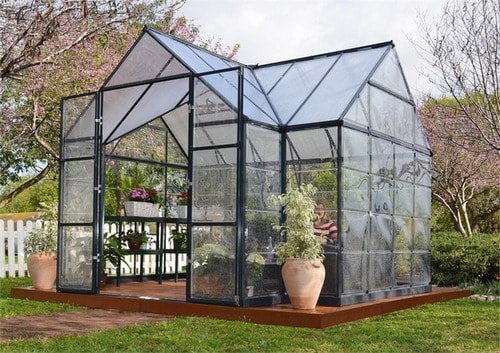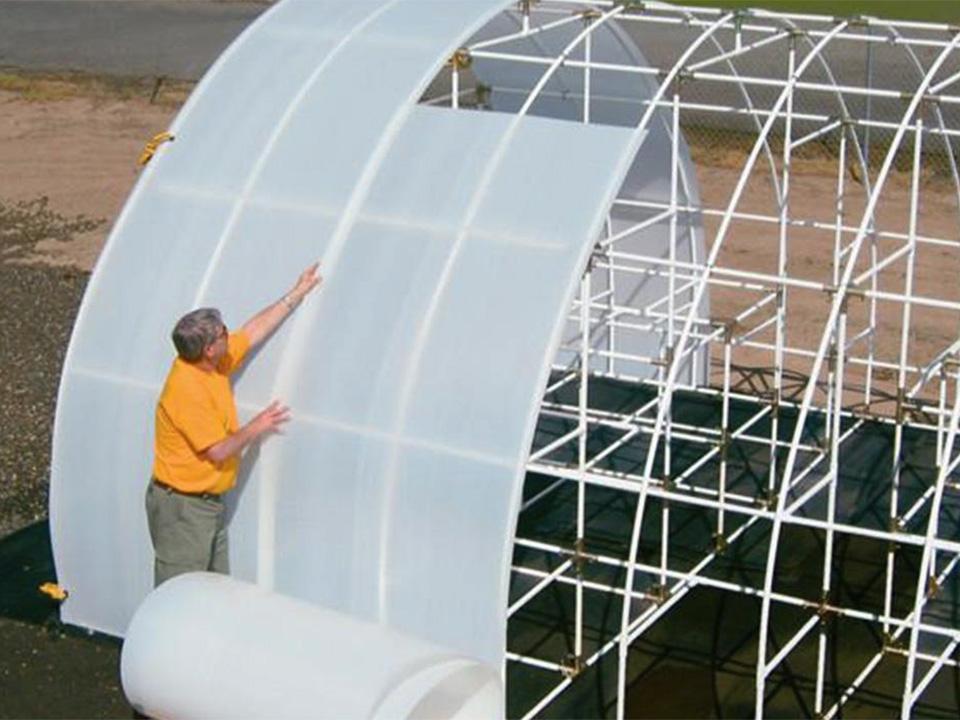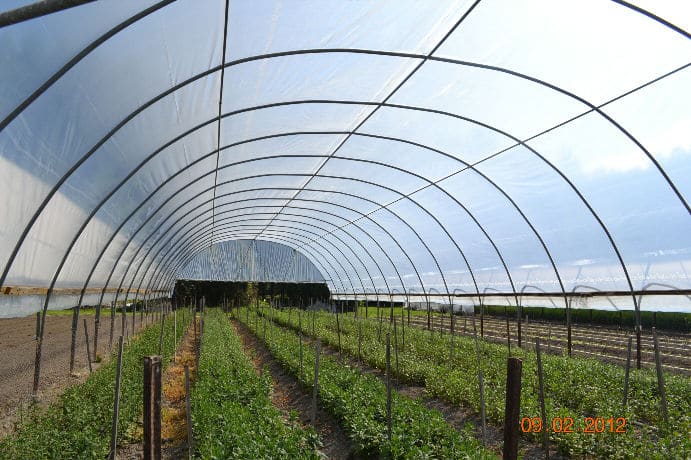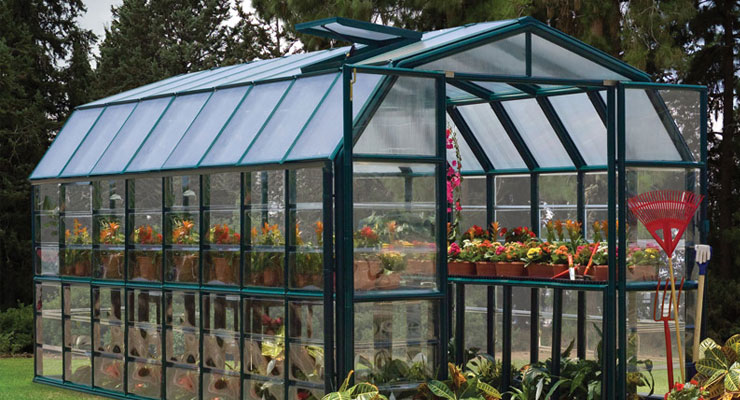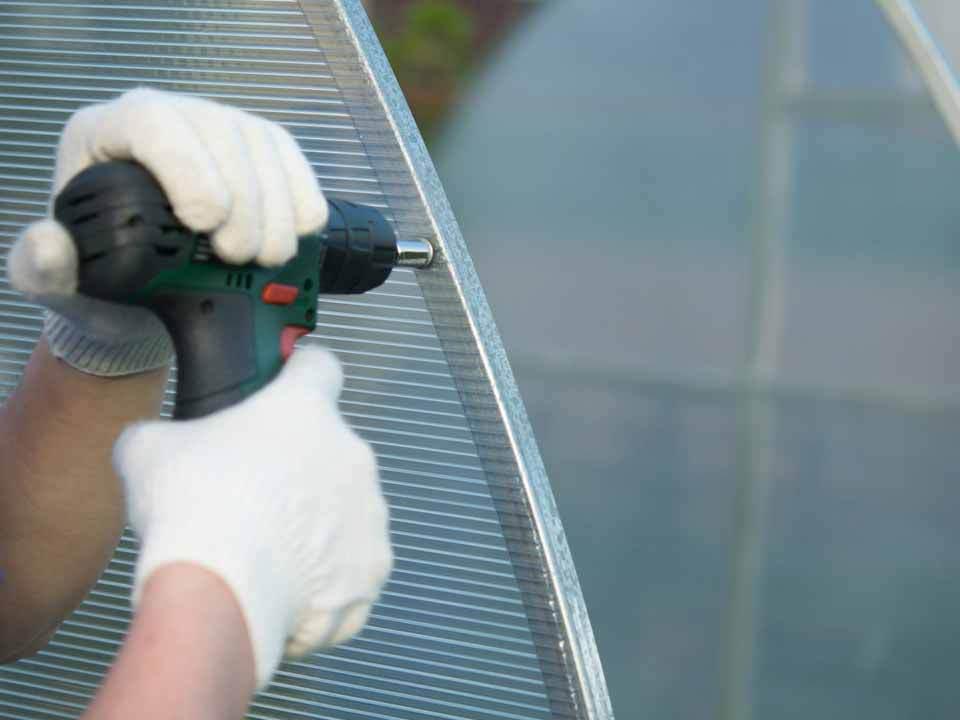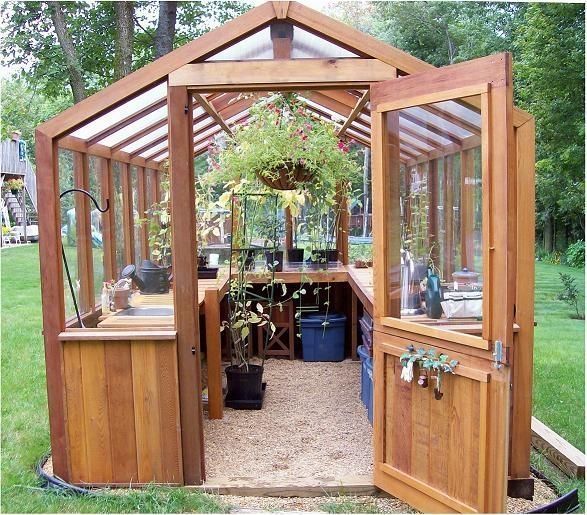The amount of light your plants will absorb is dependent on the kind of greenhouse roof you choose. Therefore, it is imperative to choose the best materials for Greenhouse Roof. Different materials allow an adequate amount of light to pass through, distributing it differently. There is no one size fits all in choice of greenhouse roof materials; you have to pay attention to your peculiar needs. The amount of light exposure needed by different plants differs; some require a lot of light while others require minimal light exposure. Exposing the latter to too much light can overheat it while the former can have growth problems due to energy shortage if not exposed to sufficient light. Ultimately, it is about choosing the best greenhouse materials for your roof.
The most popular materials for greenhouse roofs are fiberglass, plastic, and glass. They all have their merits as well as weaknesses. The characteristic common to these materials is that they are all light-permeable, allowing light and heat needed for plant growth to get into the greenhouse.
Best Options for Greenhouse Covering
The suitability of greenhouse materials varies from the need of one person to the other, just like most other products. For example, what you need for a large area is different from what a small area requires.
Sometimes, what you need might just be a cold frame to shield delicate and young plants from extreme weather conditions. Therefore, there is no single best greenhouse covering material for all situations.
To get the best greenhouse covering material, you must first identify your need and requirement. Then you can decide on which material is best for you.
Key considerations when choosing the best material for greenhouse roof
Type of greenhouse: the type of greenhouse to be built is a leading factor in the choice of material to use. For example, different materials may be required for small or large greenhouses as well as for semi-permanent or permanent ones.
Type of framing: the framing material used for a greenhouse is another factor that may determine the materials used for a greenhouse roof.
Budget: the amount available for greenhouse roofing perhaps holds more power in determining the greenhouse roof material that will be used. Set your budget and then choose a material that fits in while equally making room for other factors.
If all the factors above are properly considered, it will be easier to choose the roof that is most appropriate for a greenhouse.
What kind of plastic to use for greenhouse roofing?
There are different kinds of greenhouse plastics, including:
Polycarbonate plastic
This is rated among the best greenhouse covering materials. Polyethylene plastic is used to make this double-wall material. It has an excellent humidity and heat retention feature that makes it easier for users to garden throughout the year. It is highly durable; can serve up to 10 years if properly maintained.
Polyethylene plastic
Polyethylene has both commercial-grade and utility grades. The latter is suitable for all kinds of small to medium-sized personal projects while the former works for large industrial projects. Utility-grade polyethylene is the most common one and can last up to two years if properly maintained.
Note: buy a poly repair kit to make it easy for you to mend any small tears.
Polyvinyl plastic
Polyvinyl plastic is hardier than polyethylene plastic hence it is more expensive. In optimum condition, it can last at least five years. Regular checks and cleaning will enhance durability.
Copolymer plastic
This plastic is also above polyethylene plastic although not as much as polyvinyl plastic. Its strength and longevity are good, lasting at least three years if properly maintained and in optimum weather conditions. There are two spectra to this – the more expensive option which is as clear as glass and much stronger and the lower-priced option.
Benefits of using greenhouse plastic roofing
One of the best greenhouse materials you can use for your roof is greenhouse plastic sheets and rolls. If you are not familiar with this greenhouse material, your first imagination of what it would be like is regular plastic. However, greenhouse plastic sheets and rolls are very different from regular plastic because of the addition of greenhouse film to the plastic prior to the formation of rolls and sheets. Some of the top benefits of greenhouse plastic are:
Hardy and very durable: greenhouse plastic is designed to handle all weather conditions so graciously hence it is very hardy and will not tear easily even when cut. It will serve you for a good number of years (up to 10 years) without any hassle. Its great durability also means lower pollution because less plastic ends up in the trash.
Note: extreme weather conditions like hail, tornadoes, frosting, etc. can significantly reduce the lifespan of greenhouse plastics.
Cheaper option: investing in greenhouse glass is a capital-intensive project. If you can.t afford this, greenhouse plastic is a great, cheaper alternative. When the prices are considered alongside their functionalities, greenhouse plastic is perhaps the best greenhouse material.
Versatile: greenhouse plastic is suitable for diverse sizes and shapes of greenhouses, a factor that contributes significantly to its popularity. It can equally be used for vents, doors, and windows framing.
Easy setup: finally, greenhouse plastics are very easy to set up.
Glass greenhouse roofing
Glass is the most traditional as well as permanent material used for greenhouse roofs. It is the clearest material, permeating most light. If you are looking to build a permanent greenhouse, glass is a top choice. This material can be very fragile but options such as tempered glass which can be five times thicker than regular glass can withstand harsher conditions, including holding heavy snow for long periods. If glass materials are properly set up, they can last for many years.
Cons
Huge capital: glass roofing is very expensive due to the high cost of glass and the need for strong and stable framing materials. This high cost makes it a difficult or an impossible option for many people.
Leak problems: leaking is a common problem with glass greenhouse roofs that are not properly constructed and sealed. This can compromise the entire roof as well as the plants.
Not the best insulator: glass does not offer the best insulation which could pose a problem in certain areas. If you need a material to maintain the temperature of a greenhouse, especially in very cold winter, the glass may not be the best option.
Breakability: the risk of even the toughest glass breaking is higher than that of other materials hence it is imperative to be very careful.
Pros and Cons of fiberglass greenhouse roofing
Fiberglass is another common material used by greenhouse owners for glazing. A fiberglass greenhouse can last up to 20 years while another will last for just three years, depending on the types and grades of materials used to build it. It is important to note that fiberglass is different from glass greenhouse materials. This material provides several impressive benefits for plants but also has some weaknesses, like other materials.
Pros
Durability: some grades and types of fiberglass such as corrugated fiberglass are highly durable and very suitable for areas with heavy snows and strong winds. Its ability to hardly contact or expand in varying temperatures makes it perfect for areas with harsh weather conditions.
Better insulation: fiberglass may let in the same amount of light as glass, its insulation capacity is much better. This is an important feature to keep plants warm in the winter. Also, it diffuses light to enhance plant photosynthesis.
Ultraviolet gel protective coating: this coating helps to prevent fast yellowing of the covering, allowing optimum light penetration.
Easier to build: fiberglass is lighter and easier to move around hence it is easier to use than glass. Similarly, the expansion of an existing fiberglass structure is easier thanks to the relative flexibility and ease of cutting.
Less expensive: fiberglass is among the least expensive materials for greenhouse glazing hence it is suitable for a wide range of users.
Cons
Maintenance can be hard: cleaning corrugated fiberglass can be a tough task despite the fact that it shouldn’t get dirty because it will reduce the amount of light it diffuses into the greenhouse.
Yellowing: though it is coated to prevent fast yellowing, it eventually gets yellowed when the coating is burned off. This can compromise the effectiveness of fiberglass as well as make it unappealing.
Danger during cutting: cutting fiberglass poses a great danger to health hence it is important to be very careful to avoid inhaling tiny glass fibers that can irritate exposed skin and the lungs.
Always use breathing masks, long sleeves, and gloves when cutting fiberglass as well as when cleaning the environment when the cutting was done.
Highly flammable: fiberglass is extremely flammable hence heat sources should not be brought close to it. This could pose a great challenge if you need to heat the greenhouse during winter.
A general grouping of greenhouse covering materials for DIY projects
Covering rolls
These greenhouse materials are ideal for people dealing with volume. It is quite light and has an impressive rate of light diffusion. It can be used for all kinds of greenhouse structures. There are great options in this category, most of which are perfect for people whose plan is serious produce production due to their heat retention. The installation is very easy.
Covering panels
If you are more focused on the contents of your greenhouse, this is an ideal solution for you. They are above covering rolls in terms of durability, weather resistance, and maintenance. Though they are panels, they can be easily bent over the corners, without missing any spot. The installation is very easy, requiring a minimal structure to keep it firm and straight.
Woven greenhouse covers
This is a large-scale greenhouse material, most appropriate for professional greenhouse production. They are suitable for people that plant production is the main deal. They form an excellent defense against harsh weather conditions such as hail and snow. Another excellent part of this material is its anti-drip technology that moves water into the edges to eliminate or significantly reduce the chances of mold formation, a key consideration for taller greenhouses like commercial grade ones.
Where to buy greenhouse plastic
Greenhouse plastic is readily available in stores, both online and offline. Each of the options can be ordered online and delivered to owners in a few days. Note that delivery fees may apply depending on your location. Ensure you order exactly what you need to avoid unnecessary complications and returning it will take some days.
Pros and Cons of an Aluminum greenhouse framing
Aluminum is the most popular material used for framing a greenhouse. Durability, ease of installation, varying style and colors, and lightweight are some of the attributes that make aluminum popular.
Pros
Easy setup: An aluminum greenhouse kit is often delivered with almost all that is required for the setup. Therefore, putting it together is straightforward.
Availability of many colors and styles: Aluminum greenhouse kits have a wide range of colors and styles. This is largely due to the ease of painting aluminum.
Blend nicely with the landscape: aluminum greenhouse framing has a slim profile that blends the greenhouse with landscaping impressively.
Durable: aluminum is a very durable material to support your greenhouse covering materials hence you don’t have to worry about it compromising the lifespan of your greenhouse materials. The maintenance is very minimal
Cons
It does not come with a sturdy base: a heavy and solid foundation is required for the stability of your aluminum greenhouse framing in an area with mild to strong winds. Unfortunately, aluminum greenhouse kits don’t come with a sturdy base.
May bow to harsh weather conditions: aluminum is a very durable material that will neither rust nor get worn down by the sun but can be bent or twisted by strong winds and heavy snow because it is very soft.
Poor insulation: aluminum neither retains heat nor keeps cold out, an important factor for a greenhouse. To maintain the right temperature in an aluminum greenhouse throughout the year, users will have to engage other forms of insulation. It can also foster the growth of bacteria and mold due to condensation.
Expensive: aluminum is among the most expensive materials for greenhouse framing due to its composite nature. Also, you may need to use more aluminum to build a strong and permanent greenhouse framing than it’s required of other materials like steel and wood. Therefore, building an aluminum greenhouse can be very expensive.
Expansion can be difficult: the combination of expensive materials and the thinness of the frames can make it hard for users to expand an existing aluminum greenhouse structure.
Pros and cons of a wooden greenhouse
Wooden greenhouses are quite popular because of the way they blend brilliantly with garden landscapes as well as the way they weather naturally.
Pros
Cost-friendly: a key reason why many people go for a wooden greenhouse is its relatively low cost. There is hardly any need to make any special for a wooden greenhouse; most materials needed are available in local hardware stores. Also, it is environmentally friendly because recycled materials from other projects can be used.
Easier expansion: expanding an existing wooden greenhouse structure is among the easiest. This allows the user to easily take advantage of any extra space.
Great insulator: the insulation provided by wood is better than that of both plastics and metals. It is also cheap to heat in cold seasons.
Durable: wooden greenhouses are very durable, and highly suitable for areas with heavy snow and high winds.
Cons
High maintenance need: wooden greenhouse requires a higher level of maintenance especially in cold and wet weather where wood can easily rot or break down with time. However, woods like cedar require little or no treatment but the price is much higher.
Note: woods that have been treated with chemicals shouldn’t be used for greenhouses with food crops and vegetables because plants can absorb the chemicals through the soil, making them dangerous for consumption. An oil-based preservative is sufficient to treat wood but must be done regularly and plants must be removed before such treatment as they can be damaged by fumes.
Insect infestation: wooden greenhouses are prone to insects such as wood borders and termites. Therefore, it is vital to treat pests regularly, replacing damaged sections as soon as possible.
Things to check when buying greenhouse covering
Warranty: check the warranty of the greenhouse covering you want to buy; considering the duration and what it covers. You can as well extend the insurance policy of your home to your greenhouse, protecting it against unfortunate weather events.
Bigger size: it is advisable to buy a bigger greenhouse covering than you need, leaving room for possible extensions.
Note: again, the greenhouse covering you choose should be best suited for what you intend to do and your area.
Conclusion
Different materials can be used for greenhouse roofing, each of which has its merits and weaknesses that are suitable for varying circumstances. Some materials are perfect for small greenhouses while others are more suitable for commercial scale. Choosing the best material for greenhouse roofing should be informed by the factors discussed above.
